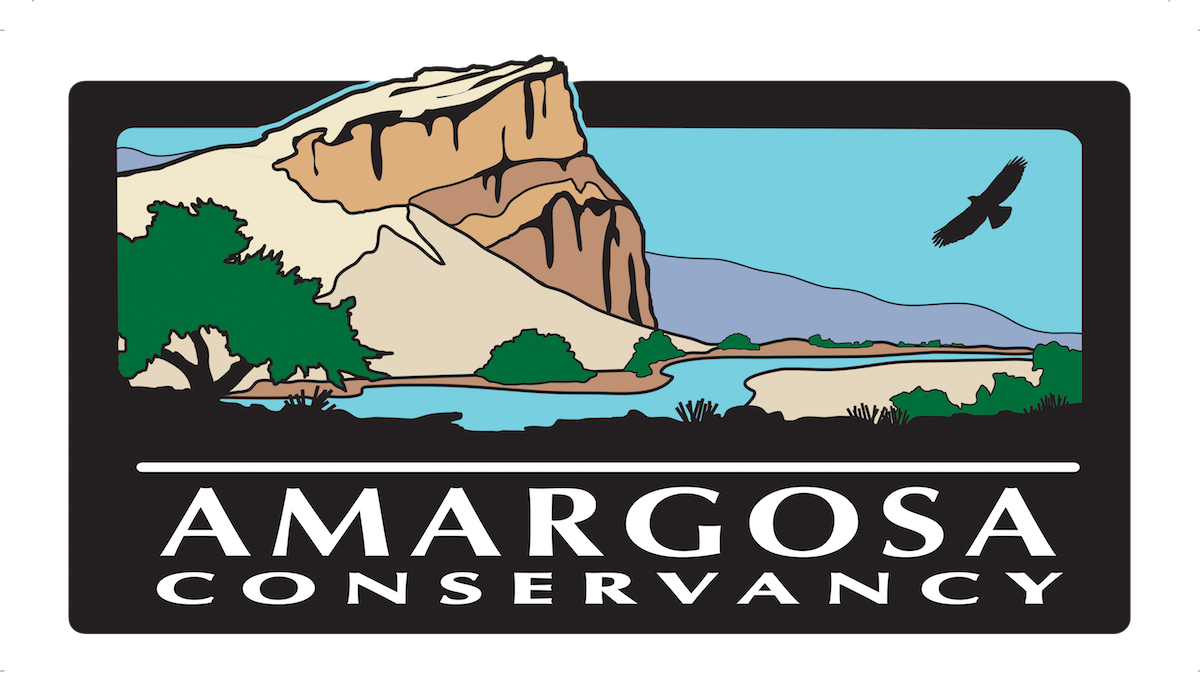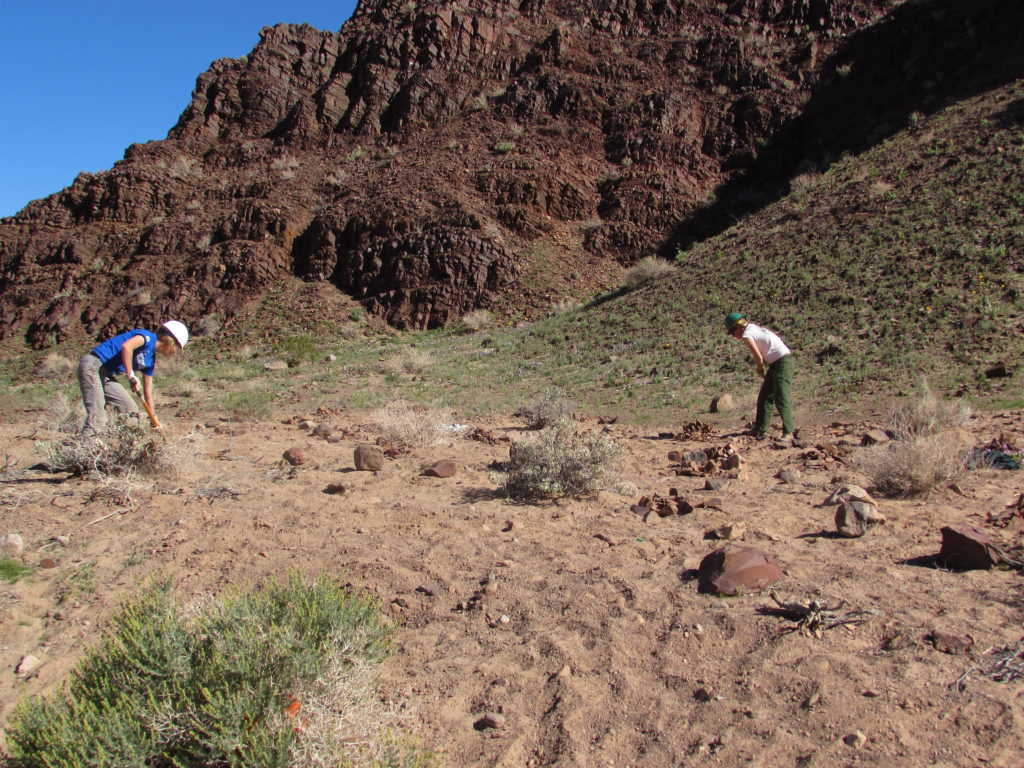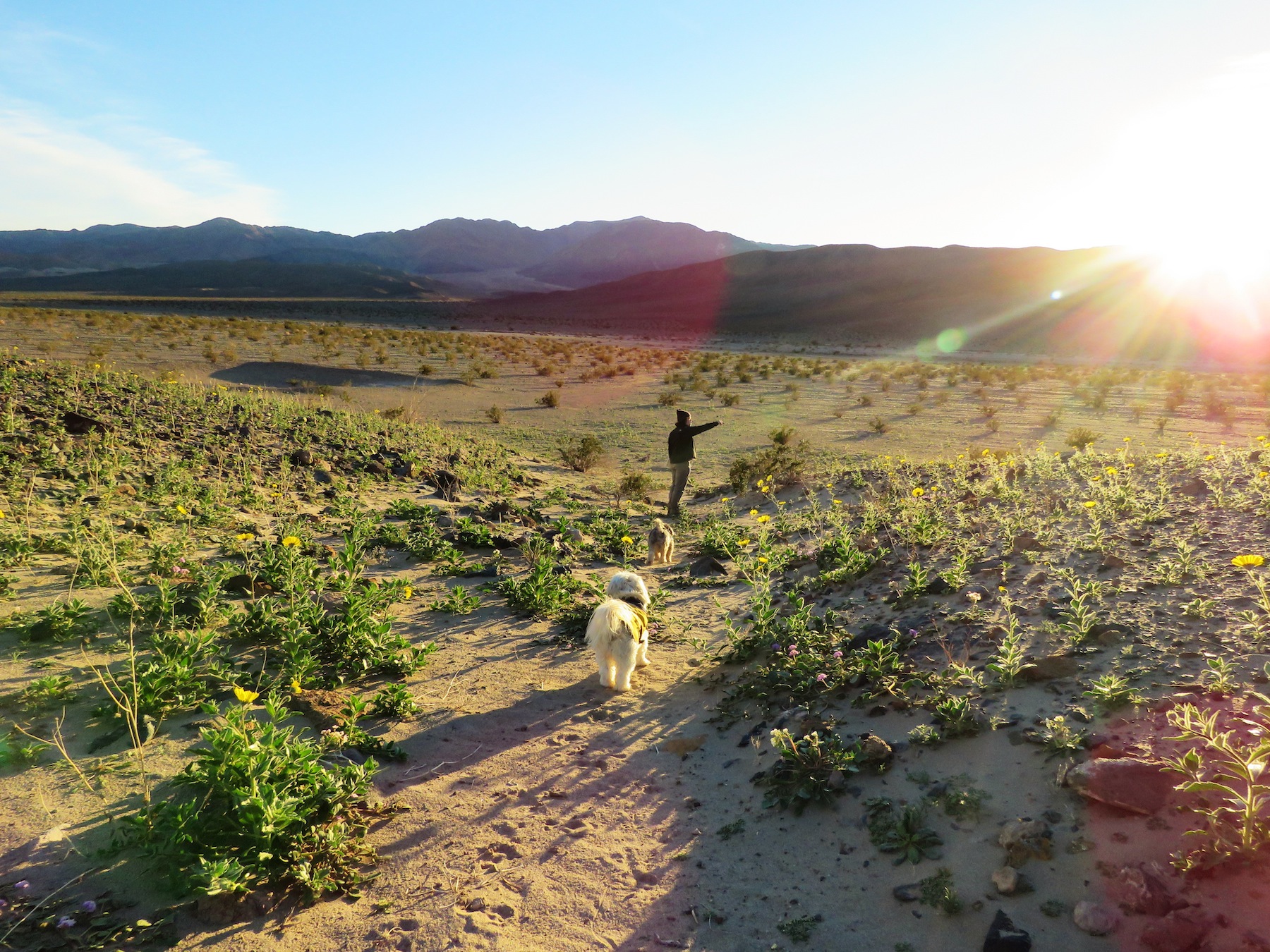What We Do
Habitat Restoration
Creating healthy habitat for the unique, endemic, and endangered species that live in the Amargosa River Watershed
Since Amargosa Conservancy was founded in 2004, we have engaged in ecological restoration of the river and its associated springs and riparian zones. Major projects have included removal of invasive tamarisk trees and constructing habitat for Shoshone Pupfish and Amargosa voles.
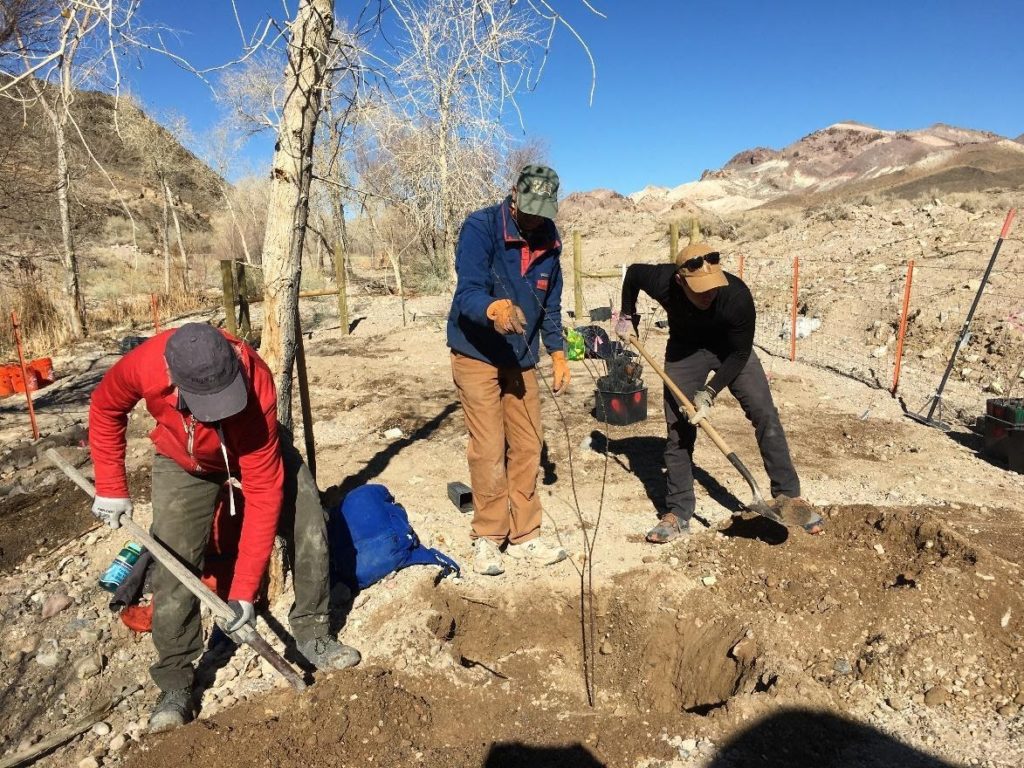
Previous Restoration Projects
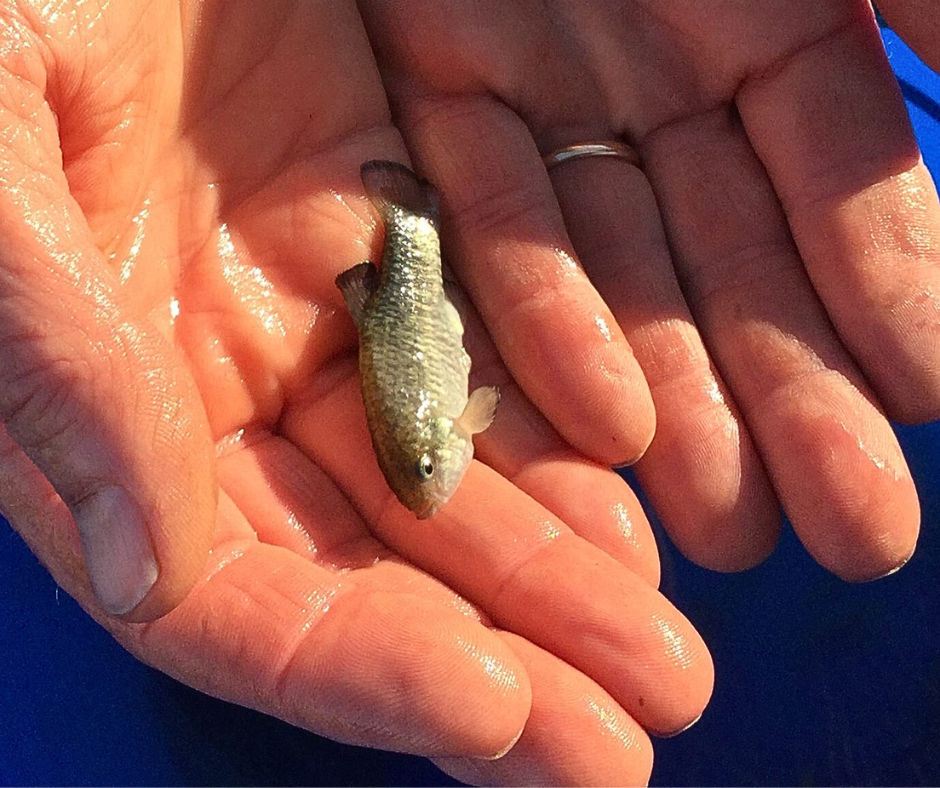
The Shoshone pupfish (Cyprinodon nevadensis shoshone) is a subspecies of Cyprinodon nevadensis
Shoshone pupfish
The Shoshone pupfish is a small (approximately 1 inch long) fish in the killifish group found only in springs in Shoshone, CA. For many years it was thought that the Shoshone pupfish had gone extinct. When Susan Sorrells discovered a small number of Shoshone pupfish in a ditch, a working group of biologists and local landowners began the work of developing habitat to sustain a larger population.
The Amargosa Conservancy was part of this restoration team and worked with Sorrells, who owns the Shoshone Village, to construct and maintain a series of ponds where the pupfish can be seen in abundance today.
Amargosa Vole
The Amargosa vole is a federally endangered rodent endemic to the bulrush marshes along the Amargosa River in Tecopa and Shoshone, California. Amargosa Conservancy worked with Susan Sorrells and a consortium of academic, state and federal agencies to re-create habitat that now supports a population of voles in Shoshone. In the winter of 2015-16, Amargosa Conservancy cleared patches of Sorrells’ land to and planted it with three-square bulrush. A captive breeding program at UC Davis raised a population of Amargosa voles and introduced them to the site in 2016.
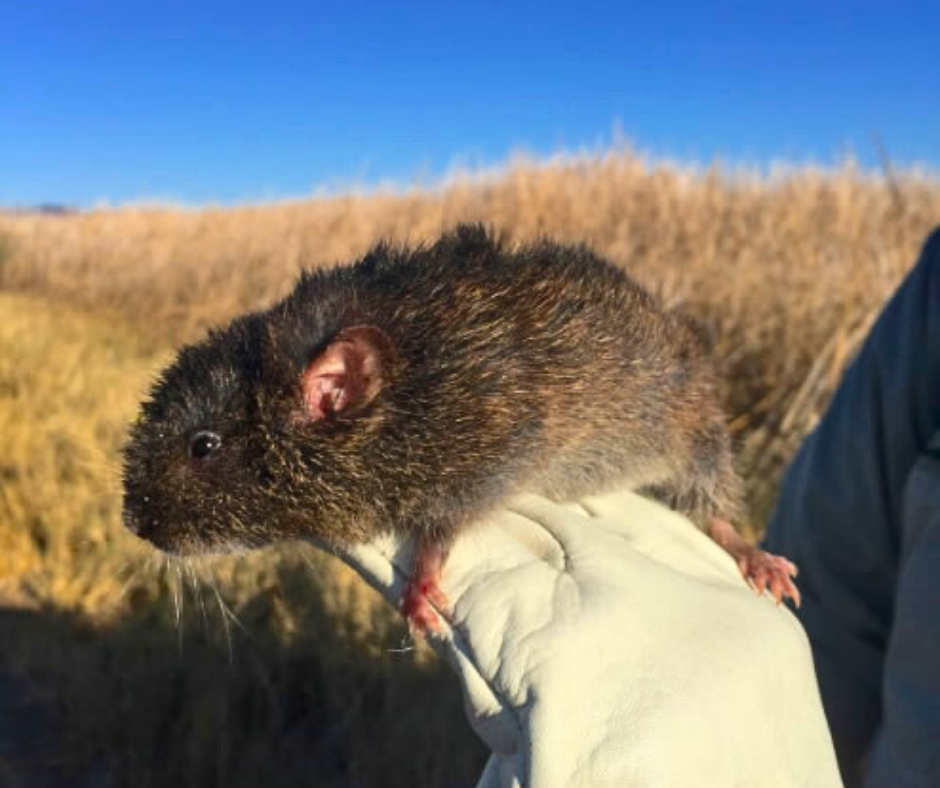
Amargosa vole (Microtus californicus scirpensis)
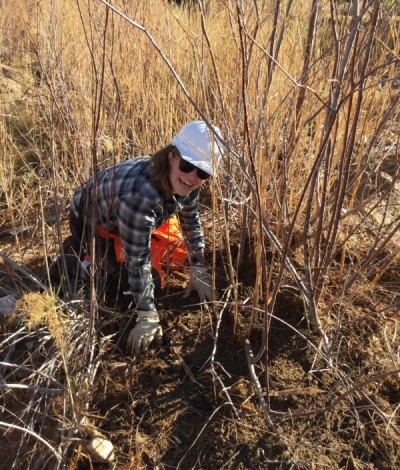
Working in the tamarisk
Tamarisk Removal
Tamarisk (also known as Salt Cedar) is a genus of trees and shrubs native to arid lands in Asia and North Africa. These plants are well adapted to thrive the Amargosa region due to their tolerance of highly saline groundwater. Tamarisk is considered invasive because of its ability to out-compete native wetland plants and poison the soil surface with deposits of salt-laden leaves.
Amargosa Conservancy has worked with BLM on several tamarisk removal projects throughout the watershed in an effort to release groundwater flow and create space for native vegetation to re-establish.
Current Restoration Projects
California Wildlife Conservation Board Grants
In February 2025, our organization entered an exciting new phase with the initiation of two major restoration projects in the California portion of the Amargosa River watershed.
These new projects, funded by grants from California Wildlife Conservation Board (WCB), establish Amargosa Conservancy as sub-awardee of both a restoration planning grant awarded to American Bird Conservancy and a restoration implementation grant awarded to California Botanic Garden. These grants provide funding for two AC staff members for the three-year duration of the projects.
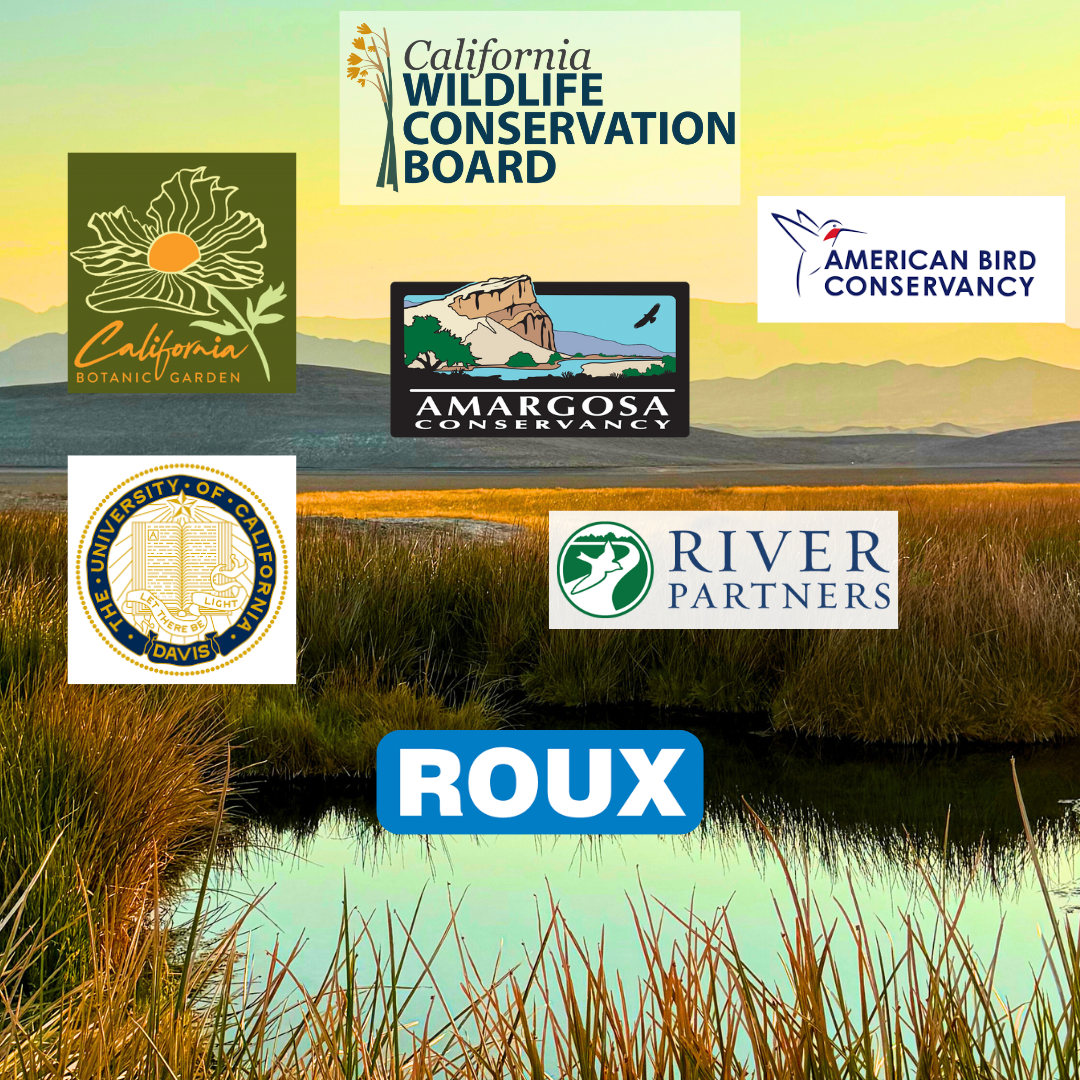
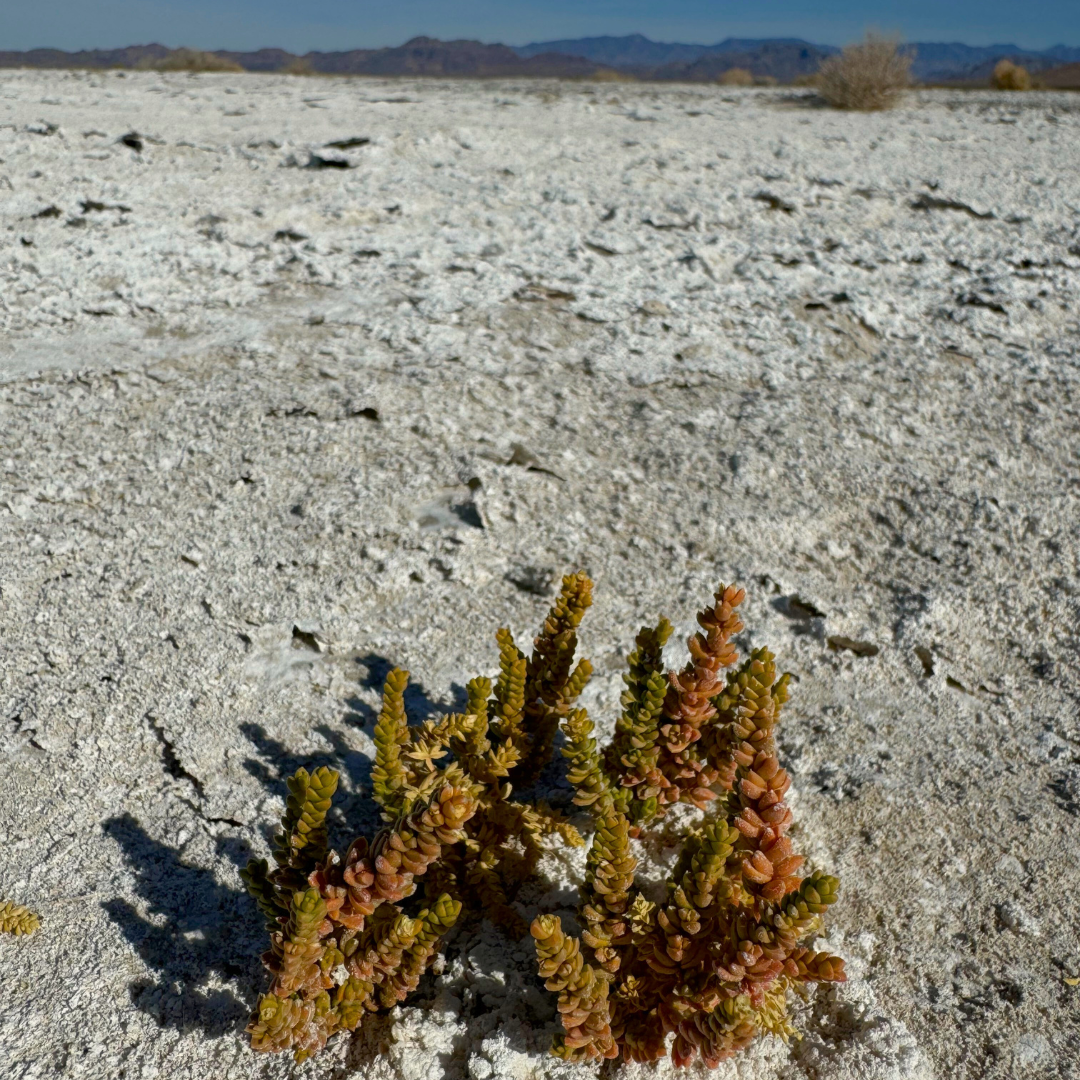
Amargosa niterwort (Nitrophila mohavensis) on the alkali wetlands of Carson Slough, California
Restoration Implementation: Rare and Endangered Wetland Plant Stewarship
The first of these two grants, awarded to California Botanic Garden, focuses on the restoration of native plant communities critical to the region’s ecological health and recovery of endangered and endemic plant species like the Amargosa niterwort. Through botanical inventory, seed collection, propagation, and outplanting, and community engagement, this project aims to revitalize sensitive habitats, enhance biodiversity, and support the recovery of rare and culturally significant plant species.
A botanical inventory is underway to create a comprehensive checklist of the basin’s plant life. This effort pulls together data from regional herbaria and databases, with new data collected by expert botanists in high priority areas where knowledge is sparse.
Amargosa Conservancy and California Botanic Garden are collaborating with the Timbisha Shoshone Tribe to establish a cultural seed banking program with the goal of restoring culturally significant plant species like screw bean and honey mesquite.
The grant also targets the recovery of the critically endangered Amargosa niterwort with an restoration project that will take an experimental approach to assess outplanting techniques and habitat quality. Over 700 Amargosa niterwort plants will be introduced into carefully managed plots, complemented by companion plants to improve habitat conditions and repair damage from past human activities. Continued hydrological monitoring of the Amargosa niterwort’s habitat at Carson Slough will inform adaptive management of this highly specialized and sensitive endemic species.
Restoration Planning: Hydrologic Monitoring, Riparian Restoration, and the Amargosa Vole “Megamarsh”
WCB awarded a second grant to American Bird Conservancy (ABC) for long-term restoration planning in the Amargosa Basin. ABC is leading a team of specialists from, Roux Inc., River Partners, UC Davis, California Botanic Garden, and Amargosa Conservancy to tackle some of the basin’s most pressing challenges. The planning grant focuses on three transformative actions:
Action 1 will sustain an ongoing groundwater monitoring program for 24 springs and 9 wells in the Southern Amargosa Basin over three years. Roux, Inc., and the Amargosa Conservancy will gather water quality and flow data to support long-term habitat management and restoration. This data will be incorporated into a revised State of the Basin Report, which will be updated and shared with agencies and partners to guide restoration efforts.
Action 2 centers on riparian restoration planning, developing a shovel-ready project to restore 975 acres along Willow Creek and the Amargosa Wild & Scenic River. This action, led by American Bird Conservancy and River Partners, will establish a plan for high-impact riparian restoration with the aim of enhancing nesting habitats for birds while also supporting habitat for other important wildlife species, such as the endemic Amargosa pupfish found in this part of the watershed. As part of restoration planning, the working group will scope opportunities for enhancing recreational access in the Amargosa Canyon as a means of supporting ecotourism in this economically disadvantaged region.
Action 3 focuses on the critically endangered Amargosa vole, designing a plan to expand and restore marsh habitats near Tecopa and Shoshone, CA that are essential to its survival. Water loss, habitat removal, disease, genetic isolation, and invasive species have significantly increased the threat of extinction for the vole. The so-called “megamarsh” planning project funded through this grant will empower researchers from UC Davis, local landowners, conservation nonprofits, and agency partners to design a shovel-ready restoration project so as to support the species recovery and increase its resilience to a changing climate.
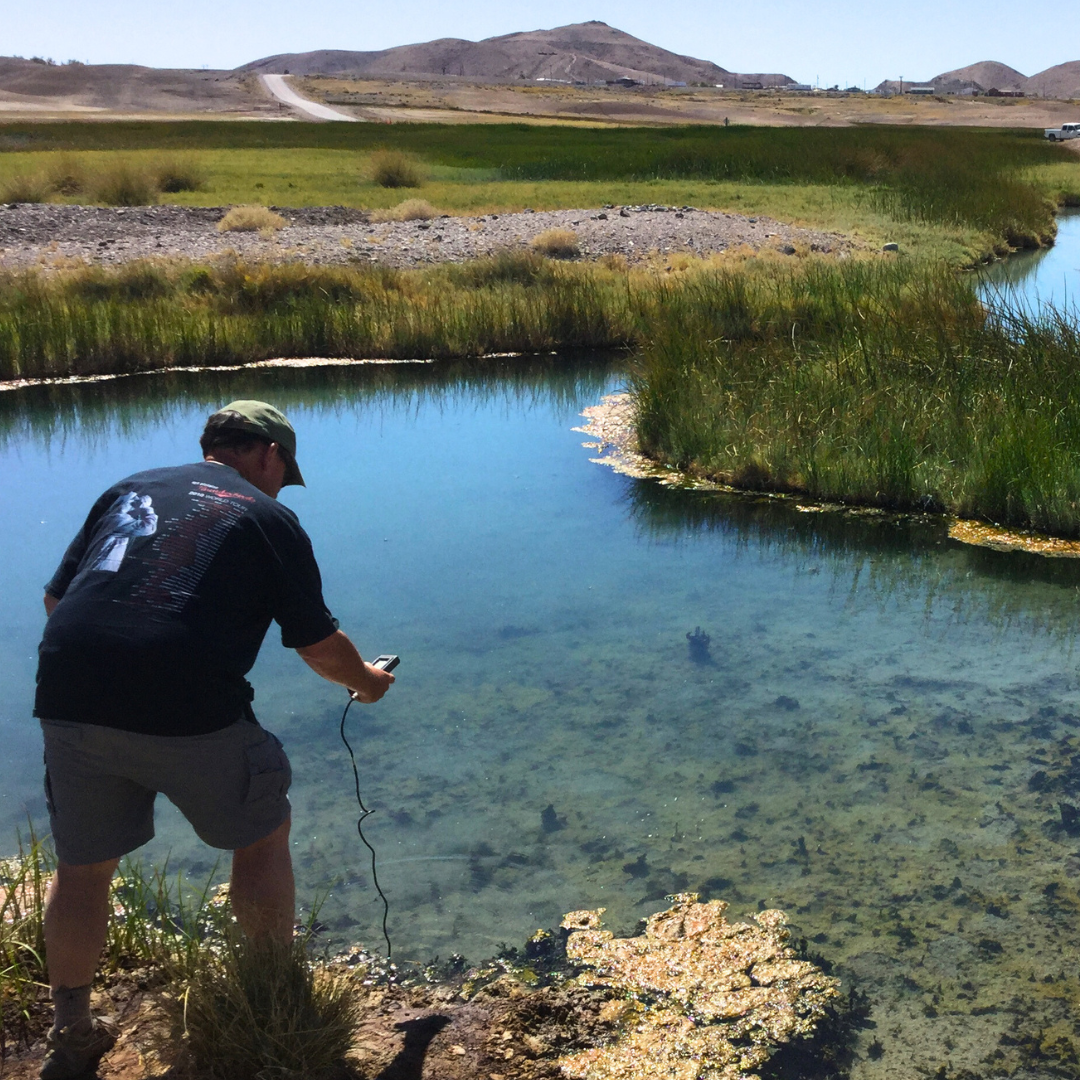
Collecting monitoring data from a spring source

Amargosa Wild and Scenic River
Recent Posts in Habitat Restoration
Vertical Mulching: A story of “Planting Dead Branches” to Restore Desert Habitat
Decompressing the soil, collecting dead parts of live bushes, putting them in a hole, filling the hole with rocks and soil and texturing the surrounding soil to naturalize an area in desperate need of rehab – steps to successful vertical mulching.
Bulrush in Blossom: Spring in the Amargosa Valley
Growing Native Bulrush in human care. We hope that supplementing the already existing bulrush in the marsh will help to facilitate even more successful growth rates. Soon enough, all of this happily growing bulrush will be more than ready to house it’s furry friend, the Amargosa vole.
Happy Faces in Muddy Places
As an AmeriCorps intern through the Student Conservation Association (SCA), my role at the Amargosa Conservancy is to be a steward of the surrounding lands and waters. Recently, my efforts have been focused on removing tamarisk from the Shoshone wetlands.
Notes from the Field: Into the Muck
I’m lucky enough to learn from the experts and will soon take on the endeavor of helping with weekly pond maintenance.
